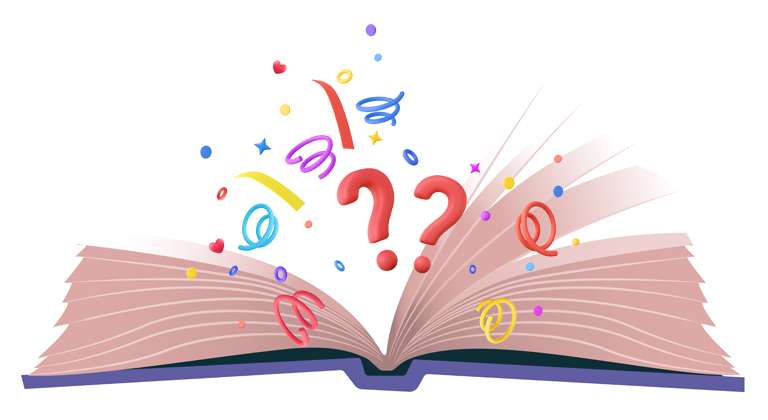Crafting Unforgettable Plot Twists
There are certain books and movies that have captivated audiences not just because of their intriguing plots, but because of their masterfully executed plot twists – moments so unexpected yet inevitable that they permanently reshape our understanding of the entire narrative. When done right, these moments can shake us to the core, leaving a lasting impression that keeps the story in our heads for years to come.
To create these plot twists, it’s vital to understand their essence, which is exactly what Ginger aims to take us through in today’s blog. The art of foreshadowing, subverting genre expectations, and creating emotional impact are just some of the topics that need to be mastered, but the result will be plot twists that don’t just shock your readers, but fit neatly in with your story and characters.
Warning: As we’re talking about plot twists and referencing examples from popular literature and film, there are many spoilers ahead!
Some of the most memorable books and movies became that way because of a shocking, unexpected plot twist – one that people continue to talk about for decades afterward. Just think of the climax of Fight Club, or Psycho, or The Sixth Sense, and you’ll probably get chills remembering the moment you witnessed the penny drop and the entire narrative journey you’d just been on get reframed in a twisted, yet satisfying new way.
When it comes to writing books, it’s a similar story. Few elements have the power to captivate readers like a well-executed plot twist – and if you’re looking to elevate your storytelling process, mastering the art of creating effective plot twists can be a game-changer. In this blog post, I’m going to explore the intricacies of crafting compelling, believable plot twists – and provide some examples from popular literature that you’re probably familiar with even if you haven’t read the books themselves.
Understanding the Essence of a Plot Twist
You need to understand what a plot twist actually is before you can use them effectively, and a plot twist is much more than just a surprise in the narrative. It’s such a fundamental concept in storytelling that Aristotle defined it around 300 BC as something that is “surprising, yet inevitable.” Ideally, that means the reader should be shocked by the plot twist – but in retrospect, realize that this was the only way the story could have been resolved.
Therefore, a plot twist has to defy expectations and challenge a reader’s assumptions, reshaping the entire trajectory of a story – but it also has to make sense. Effective plot twists aren’t random or gratuitous. They’re always purposeful, and seamlessly integrated into the narrative right from the very beginning.
Foreshadowing: The Silent Artillery
One of the ways in which you can make a plot twist seem inevitable is by subtly hinting at it throughout your story, leaving breadcrumbs for attentive readers to follow. Foreshadowing is the silent artillery behind a successful plot twist, planting seeds that, when revealed, feel both surprising and inevitable. An iconic example is Gillian Flynn’s Gone Girl, in which the twist revolves around discovering how unreliable the story’s narrators are; something that’s skillfully foreshadowed through subtle clues woven throughout the prior narrative.
Subverting Expectations: Breaking the Mold
Another effective way to craft a memorable plot twist is by subverting the conventions of the genre you write in, and the expectations of your readers. Agatha Christie’s classic Murder on the Orient Express is a prime example. The revelation that multiple characters are involved in the murder challenges the traditional whodunit structure, turning the narrative on its head and leaving readers in awe of Christie’s storytelling prowess. It’s a twist that perhaps only worked because Christie defined the modern whodunnit in dozens of prior books; but is effective nevertheless.
Crafting Your Plot Twist
Now that we’ve explored the foundational elements of a plot twist, let’s delve into the practical steps to craft your own.
Step #1: Establish a Solid Foundation
Before introducing a plot twist, ensure your story has a strong foundation. Well-developed characters, a compelling setting, and a clear central conflict provide the groundwork for a twist to have maximum impact. Readers must be invested in the story before you disrupt their expectations; so don’t neglect the fundamentals before you start chasing that twist.
Step #2: Know Your Characters
Effective plot twists often hinge on character revelations, and that requires a deep understanding of each of the characters in your story (even if, as in Gone Girl, that understanding is revealed to be false.) Dive deep into your characters’ backgrounds, motivations, and secrets so readers understand why they make the decisions they do. Understanding their true nature allows you to craft twists that are not only surprising but also authentic to the characters’ journeys; and seem believable to your readers.
Step #3: Embrace the Element of Surprise
While foreshadowing is crucial, don’t be afraid to embrace the element of surprise. The best twists catch readers off guard, challenging their assumptions and making them question everything they thought they knew about the story. J.K. Rowling’s Harry Potter and the Half-Blood Prince is a masterclass in unexpected revelations, with the shocking truth about Severus Snape leaving readers in disbelief even though Rowling laid a trail of breadcrumbs throughout prior books, all hinting at this inevitable twist.
Step #4: Consider the Emotional Impact
I’ve written before about how triggering emotion is the way to truly sink your hooks into a reader – and a good plot twist should always evoke an emotional response when it’s revealed. Whether it’s shock, sadness, or joy, the emotional impact is what makes a twist truly memorable. George R.R. Martin’s A Game of Thrones is a great example of this. His books are infamous for their unexpected character deaths, keeping readers on the edge of their seats and emotionally invested in the narrative because they never know what could happen next.
Step #5: Test and Refine
Before finalizing your plot twist, gather feedback from beta readers or critique partners. Their insights can help you gauge the effectiveness of the twist and identify any potential loopholes or inconsistencies. Use this feedback to refine your narrative and ensure the twist enhances the overall story. There’s nothing worse than trying to sell a twist that falls flat, so making sure you seed your narrative in a way that your readers can follow is vital; and beta readers can really help you make that happen.
Some Examples of Unforgettable Plot Twists
It’s all very well telling you how to craft compelling plot twists – but where do you come up with them? A twist in the tale is supposed to be surprising, which means it’s often surprising how authors come up with them!
The best place to find inspiration is by examining some of the most famous plot twists in popular culture, and reading the work of writers renowned for twisty books – Freida McFadden and Jeffrey Archer are great choices, and the adult stories of Roald Dahl are deliciously twisted.
Here are some of my favorite twists – are you fans of any of them? (Caution: SPOILERS AHEAD)
“The Sixth Sense” by M. Night Shyamalan:
- Twist: The main character, Dr. Malcolm Crowe, is revealed to be dead at the end of the movie; a fact he remained unaware of because the young boy he’s been helping can see and communicate with ghosts.
- Impact: The twist redefines the entire narrative, turning what seemed like a psychological drama into a supernatural thriller. It left audiences reeling and established Shyamalan as a master of the twist ending.
“Fight Club” by Chuck Palahniuk:
- Twist: The protagonist and his charismatic alter ego, Tyler Durden, are the same person.
- Impact: This revelation challenges perceptions of identity and reality, forcing readers to reassess the events of the entire story. Palahniuk’s twist is a bold commentary on consumer culture and the search for meaning in a modern world.
“The Girl with the Dragon Tattoo” by Stieg Larsson:
- Twist: Lisbeth Salander, the enigmatic hacker, returns to save the day after seemingly disappearing from the narrative.
- Impact: Larsson’s twist adds a layer of complexity to the story, showcasing Salander’s resilience and resourcefulness. It subverts expectations, as readers are led to believe she may be out of the picture, only to have her reemerge as a pivotal player.
“The Da Vinci Code” by Dan Brown:
- Twist: The true identity of the antagonist and the revelation that the Holy Grail is not a physical object but Mary Magdalene’s lineage.
- Impact: Brown’s twist challenges religious and historical assumptions, adding layers of intrigue to the narrative. The revelation reshapes the quest for the Holy Grail and forces readers to reconsider the story’s central mystery.
Conclusion
Crafting an effective plot twist requires a delicate balance of foreshadowing, surprise, and emotional impact – but like all crafts, it can be learned. By understanding the essence of a plot twist and following practical steps, self-published authors can elevate their storytelling to new heights and engage with readers on a deeper, and more memorable level.
My advice, beyond what I’ve outlined here, is to continue to study the masters of the plot twist, experiment with and subvert traditional narrative conventions, and embrace the power of the unexpected. Remember – a well-crafted plot twist has the potential to linger in the minds of readers long after they’ve turned the last page, so get yours right and your story might become an especially memorable addition to the world of fiction.











